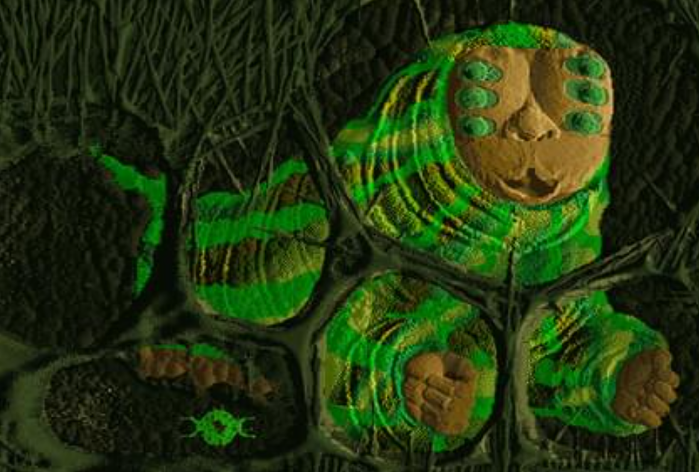Filed Under: Material culture > Entertainment > K-D Lab, "Vangers: One for the Road," 1998
K-D Lab, "Vangers: One for the Road," 1998

Released by game development studio K-D Lab just a year after the first Grand Theft Auto (GTA), Vangers: One for the Road both was, and profoundly was not, a response to the hit Western franchise. Whereas GTA represented explosive vehicular action through the adventures of a criminal moving through a parodic urban space, Vangers opted for a deeply alien universe with enormous, insectoid machine-beings. Seemingly animated with Claymation, these beings also existed in an odd biological relationship with the player’s avatar. As in GTA, the player of Vangers primarily operated a vehicle as their avatar, but unlike in the British game, they were not separate from it—not a driver getting in and out of different cars—but rather a kind of customizable vehicular insect themselves.
For a game from the 1990s, the customization in Vangers was remarkably ambitious, with surrealistic writing and world-building overlaying a fairly deep system where players could swap not only weapons, but mobility systems that allowed their insect-car to fly, jump, or burrow. During the game, players could explore the strange universe around them for secrets and objectives while fighting other vehicular insects along the way.
Although Vangers never attained the success of GTA and its many sequels, it nonetheless remained a (nearly forgotten) favorite, re-released for modern computers in 2014 on the major game distributor sites Steam and GOG. Its popularity testifies to the peculiar game design culture of the post-Soviet 1990s, where major titles seem characterized by intense, possibly impossible ambition, unusual and defiantly weird aesthetics and gameplay mechanics, and a lingering afterlife as cult classics among discerning connoisseurs of independent and avant-garde games.